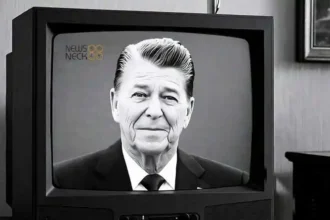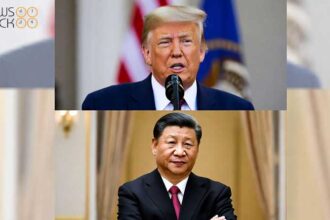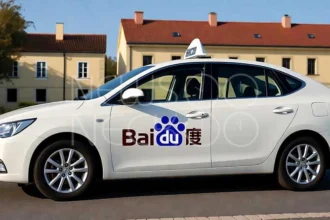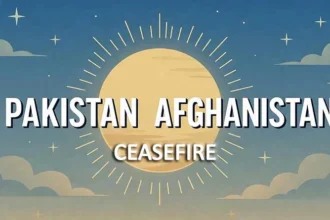A New Chapter in Global Politics Unfolds as Old Friends Drift Apart
Something unexpected is happening in the world of international relations, and it might change how countries work together for years to come. The United States, long considered a close friend of India, has suddenly become more friendly with China while growing distant from New Delhi. This dramatic shift has left many people scratching their heads and wondering what went wrong.
For the past twenty years, America and India built what many experts called a special friendship. The two nations, both democracies with growing economies, seemed like natural partners. They worked together on trade, security, and technology. American leaders, from different political parties, all agreed on one thing: India was important for keeping balance in Asia, especially as China grew more powerful.
But today, the story looks completely different. India now pays higher taxes on goods it sells to America than China does. This surprising turn of events tells us something important about how President Donald Trump views the world and makes decisions about America’s friends and rivals.
The Numbers Tell a Shocking Story
Let us look at what actually happened. When American President Trump met with Chinese President Xi Jinping in South Korea last Thursday, something remarkable occurred. The two leaders, who had been fighting over trade for years, suddenly decided to become friendlier. America reduced the special taxes, called tariffs, that it charges on Chinese products. These tariffs dropped from twenty percent to just ten percent for certain goods. Overall, China now pays around forty-seven percent in total tariffs.
Meanwhile, India faces a much tougher situation. The United States has placed fifty percent tariffs on Indian goods. On top of that, India must pay an additional twenty-five percent tax because it continues buying oil from Russia. When you add these numbers together, India pays significantly more than China does.
This is not just about numbers and percentages. These tariffs represent real money that affects real people. Indian businesses find it harder to sell their products in America. American consumers might pay more for goods they buy from India. Workers in both countries feel the impact of these decisions.
You Might Like it: Breaking Barriers: How One Handshake Between Two Leaders Just Changed the Future of Technology
More Than Just Trade Problems
The troubles between America and India go beyond taxes on products. President Trump has made other decisions that upset Indian leaders and citizens. One major issue involves special work visas called H1B visas. These documents allow skilled Indian workers to take jobs in American technology companies. Many Indian engineers, doctors, and software experts have used these visas to work in Silicon Valley and other American business centers.
Now, the cost for these visas has jumped dramatically to one hundred thousand dollars. This enormous fee makes it nearly impossible for many talented Indians to work in America. For decades, Indian professionals have contributed greatly to American innovation and business growth. This new policy feels like closing a door that had been wide open.
President Trump has also made claims about helping negotiate peace between India and Pakistan, two countries with a long and complicated history. Indian officials have repeatedly stated these claims are not true, but Trump continues making them. Such statements create confusion and frustration in New Delhi.
What Changed and Why
Experts who study international relations are trying to understand this dramatic shift. Atman Trivedi, who specializes in South Asian affairs at DGA-Albright Stonebridge Group, says the trust between America and India has suffered serious damage. He believes it could take many years to repair the relationship that once seemed so strong.
Raymond Vickery Jr., a senior expert at the Center for Strategic and International Studies, offers another perspective. He explains that every American president from Bill Clinton onward, including Trump during his first term as president, valued India as a democratic partner. They preferred working with democratic India rather than authoritarian China.
However, something has changed in Trump’s thinking. Vickery suggests that Trump no longer sees India as important for balancing China’s growing power in Asia. Instead, Trump now treats India based purely on business deals and immediate benefits. This approach, which experts call “transactionalism,” focuses only on what America gets right now, not on long-term friendship and shared values.
Also read: Indian Stock Market Turns Bullish as FIIs Return: Is a New Rally Ahead?
China Becomes the Preferred Partner
The warming relationship between America and China looks even more surprising when we remember recent history. Just a few years ago, these two powerful nations seemed headed toward serious conflict. They fought over trade, technology, and influence around the world. American leaders accused China of unfair business practices and stealing technology secrets.
Now, Trump celebrates his meeting with President Xi on social media, calling it “great for both countries” and promising “everlasting peace and success.” The American Secretary of Defense, Pete Hegseth, announced that the two militaries would create special communication channels to prevent misunderstandings and reduce tensions.
This rapid change confuses many observers. How did America go from viewing China as a threat to treating it as a partner, while simultaneously pushing away India, a fellow democracy?
India’s Response and Future Questions
Indian officials have not stayed quiet about these changes. They called America’s tariff decisions “unfair, unjustified and unreasonable.” These strong words show deep disappointment with how America is treating its former close friend.
The situation raises important questions about the future. Will other democratic nations worry that America might abandon them too? Does this mean America no longer cares about supporting democracy around the world? How will this affect security in Asia, where China continues expanding its military and economic influence?
For ordinary people in both India and America, these political changes create uncertainty. Indian students wonder if they can still study in American universities. American businesses that invested in India worry about their future. Families separated by oceans hope that their governments will solve these problems quickly.
Understanding the Bigger Picture
This story teaches us something important about how international relationships work in today’s world. Friendships between countries are not permanent or guaranteed. Leaders make choices based on what they think benefits their nation most, and sometimes these choices surprise everyone.
The shift in how America treats India versus China shows that President Trump has different priorities than previous leaders. Whether this approach succeeds or creates more problems remains to be seen. What we know for certain is that millions of people in India, America, China, and around the world will feel the effects of these decisions for years to come.
As this new chapter in global politics unfolds, one thing becomes clear: the old rules about friends and rivals in international relations are being rewritten, and nobody knows exactly how the story will end.
Author: Yasir Khan
Date: 03 Nov, 2025
For More Updates, Visit Newsneck













